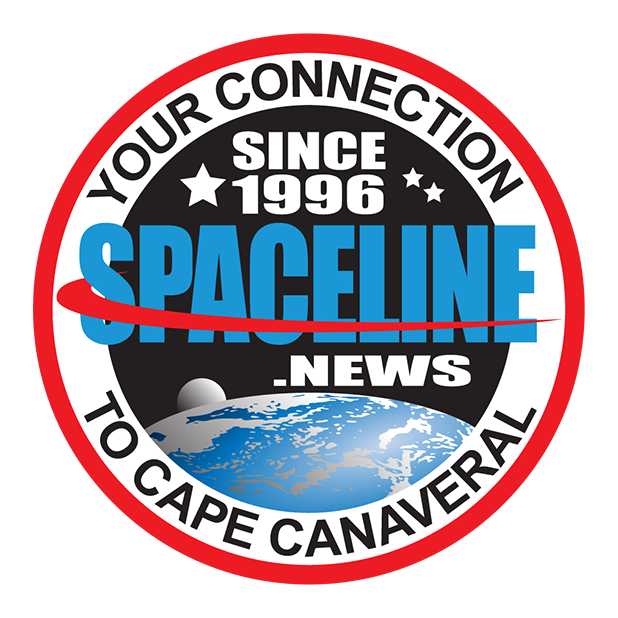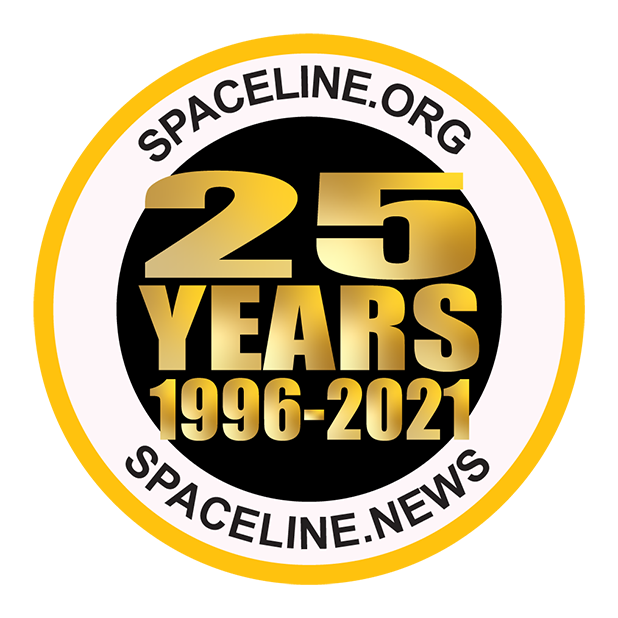
Falcon Heavy STP-2 Launch, Photo Courtesy SpaceX
Falcon Heavy Successfully Launches Numerous Satellites
A SpaceX Falcon Heavy rocket successfully launched the Space Test Program-2 (STP-2) payload at 2:30 a.m. EDT today from Launch Pad 39A at the Kennedy Space Center. Launch was delayed three hours to allow additional time for ground support operations. The rocket's two side boosters launched today previously supported the Arabsat-6A launch in April, 2019 and marked the first Department of Defense launch to employ re-flown boosters. The two side boosters successfully landed at Landing Zones 1 and 2 on Cape Canaveral Air Force Station. The rocket's center core booster was not recovered as it missed the "Of Course I Still Love You" drone ship positioned on the Atlantic Ocean about 600 miles off Cape Canaveral. Deployment of STP-2 "ride share" satellites began about 12 minutes after launch and was completed about 3 hours, 32 minutes after launch. Given the number of satellites employing several orbital planes, today's mission was considered the most complex ever launched by SpaceX.

Falcon Heavy STP-2 Ascent, Photo Courtesy NASA
The STP-2 launch demonstrates the capabilities of the Falcon Heavy rocket and will provide critical data supporting certification of the launch vehicle for future National Security Space Launch (NSSL) missions. The flight will also serve to certify the use of previously flown boosters for NSSL use. STP-2 carries 24 satellites for customers including the National Oceanographic and Atmospheric Administration (NOAA), NASA, the Department of Defense Research Laboratories and university research projects. Specific payloads include the Air Force Research Laboratory's Space Vehicle Directorates Demonstration and Science Experiments (DSX) spacecraft which will study the harsh radiation environment at Medium-Earth Orbit (MEO). Other payloads include the COSMIC-2, a multi-agency partnership to study new methods of measuring temperature and moisture in the atmosphere.

Falcon Heavy Two Side Boosters Approach Landing, Photo Courtesy SpaceX
Also included are the Green Propellent Infusion Mission (GPIM) to study green alternatives to conventional chemical propulsion. OCULUS-ASR is a university-sponsored experiment to study the detection of spacecraft attitude and configuration using shapes and surfaces observed from the ground. The Orbital Test Bed (OTB) will study methods of spacecraft navigation. NPSat is a Naval Research Laboratory (NRL) experiment to study enhanced space situational awareness methods. Prox-1 is a university-developed microsatellite to demonstrate small satellite close-encounter operations. STP-2 also carries five cubesats, the E-TBEx radio signal study, Launch Environment Observer (LEO) and StangSat vibration study, PSAT amateur radio experiment, TEPCE electric propulsion experiment and LightSail-B solar power research satellite. A number of other satellites were also flown.

Falcon Heavy Two Side Boosters Land On Cape Canaveral, Photo Courtesy SpaceX

